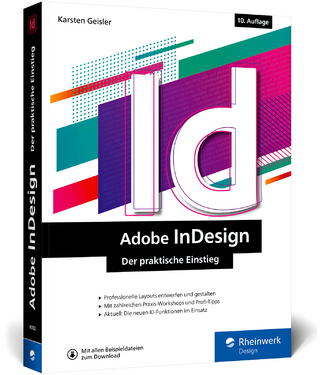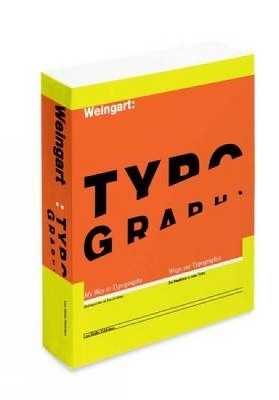
Avoiding the Output Blues
Prentice Hall (Verlag)
978-0-13-084876-5 (ISBN)
- Titel ist leider vergriffen;
keine Neuauflage - Artikel merken
PLEASE PROVIDE
With today's electronic publishing tools, it's all too easy for graphics arts professionals to waste thousands of dollars and miss crucial print deadlines due to minuscule errors that aren't caught until too late. In this book, top graphic design consultant Dr. Taz Tally addresses every risk area in electronic publishing -- with specific techniques and solutions that will keep this from happening to you! Start with the fundamentals: a practical explanation of how electronic publishing works -- and why it often doesn't work. Understand the entire digital prepress landscape, from the key characteristics of bitmapped and object- oriented images, to essential techniques for preparing vector and contone EPS files, to how electronic files are constructed for output. Discover 100 essential tips every digital publisher should know -- and learn in-depth techniques for avoiding Postscript RIPing errors. Entertaining and accessible, this is required reading for anyone who must understand digital imaging in the Postscript age.
Taz Tally, Ph.D. is a nationally known electronic publishing consultant who has designed, installed, and troubleshot electronic publishing systems for companies across North America, from one-person shops to the Fortune 500. Founder of Taz Tally Seminars, he is legendary for entertaining, content-rich seminars on a wide range of electronic publishing topics, including scanning, Photoshop, prepress, and preparing files for print.
Acknowledgements.
Overview.
Meet the bits & Bytes Players.
DTP 101 - THE BIG PICTURE.
1. Pressing Problems.
The Printing Challenge. Pressing problems of putting ink on paper.
The basic challenge of printing. New language skills ¥ New technical challenges. Image reproduction challenges. Text and line art. Tonal images. The challenge of color. Changing printing technologies. Reduce & simplify. Making RIP-ready files.
2. Terms Of Endearment.
Electronic Publishing Terms.
Half the battle.
3. Peaceful Coexistence.
Electronic Publishing Culture.
Effect of the postscript revolution. File preparation: whose responsibility? Partnering. Convergent technologies.
4. Electronic Publishing Systems.
DTP History. Computers revealed: parts and functions.
Motherboard (green). RAM (Random Access Memory). Storage memory (large). Storage memory (small). Expansion slot. CPU (Central Processing Unit). Video board. SCSI, printer, and modem ports. Keyboard, mouse, digitizing tablet. Electronic components publishing & systems capabilities.
Electronic Publishing Systems Diagram. Types of Computer Systems. Central computers.
Mainframes.
Desktop computers. Macintosh. PCs (personal computers).
Peripheral devices and software. Servers. Others. Silicon Graphics and Suns. Clones. What to buy?
5. Software.
Operating Systems and Applications. Types of software. Operating systems.
Desktop views. Icons. Menus.
Windows.
Location windows. Document windows. Information and dialog boxes.
Applications.
Document creation. Cross-platform Acrobat PDF.
Resources. Utilities.
Minimizing your system.
DTP 201 - FILE FUNDAMENTALS.
6. bits & Bytes.
Two ways to view the world.
Analog vs. digital devices & data. Basic computer language. Graphic formats. Text formats.
Computerese Defined. The basics of bits, Bytes, & ASCII.
bit & Bytes. ASCII. ASCII code character translations. Examples of ASCII code word translations.
7. Basic Computer Skills & Habits.
Basic Computer Skills. Four basic skills.
Point. Point and single click. Point and double click. Point click, hold, & drag.
Advanced skills.
Back to the keyboard. Keyboard position.
Think layers.
Window layers. Page element layers.
Keep organized.
System files. Application files. Document files. Font files. Utility files.
Safety habits.
Saving. Backup and archiving. Viruses.
Performance tips.
Be a minimalist. Keep file sizes small. Never work off of floppies. Archiving. Virtual memory or scratch disk. Preference files.
8. Resolving Resolution.
What is resolution? Resolution vs. file size. Dots, spots, & pixels.
Resolution Comparison.
Multibit contone images.
Resolution Glossary.
Digital computer language. File size terminology. Scan or input resolution vs. file size. Output or print resolution. Halftone dots. Halftoning. where it occurs. DPI vs. LPI vs. shades of gray. Optical resolution vs. interpolation. A final word about file sizes. A final resolution.
9. Grappling With Graphics.
Types of graphic files.
Bitmap/raster vs. outline/vector images. Compound images. Graphic file formats. Graphic file types. File format vs. file size. Cross platform file exchange. Pixel depth.
Working with graphics.
Bitmapped TIFF graphics. Vector EPS graphics. Outlining graphics. Blends. Imported or placed graphics. Avoiding nesting graphics. Some miscellaneous graphical do's and don'ts.
Feeling compressed.
What is compression? Need for compression. How compression works. Types of compression. Compression formats. Working with compressed files.
10. RIPing Up Your Files.
The Postscript RIP. The generation of dots.
Postscript printers and RIPs. Resolution and RIPing. Text and line art images. Digital halftones. The RIP as a funnel or filter. Postscript. Postscript dictionaries.
11. A Tale Of True Typesetting.
What is a font?
Type control.
Finding your fonts.
Location. Font file structure. Font naming.
Fondling your fonts.
Here are some tips for managing your fonts.
Typesetting vs. typewriting.
Different techniques and capabilities. Some typesetting guidelines. Typesetting with style. Setting type in drawing applications.
DTP 301 - PROJECT CONSTRUCTION.
12. Taming Your Scanner.
Visualization in scanning for print.
History.
How scanners work. Goals for scanning. Types of images. Parts of an image. Scanning goals & challenges.
Challenge # 1: changes in image. Challenge #2: loss of data. Challenge #3: calibration & dynamic range. Challenge #4: media changes & dot gain. Challenge #5: gamut conversion. Challenge #6. impure inks.
Visualization. Scanning approach.
The original image. Image analysis and scan modes.
Scanning process.
Prescanning. Calibrating your scanner. Line art scanning. Contones: grayscale and color. RIPing considerations. Resolution guidelines. Post-Scan manipulation of line art images. Pre/Post-scan manipulation of contone images. Image and file formats.
PhotoCD images.
What is PhotoCD?
Multiple resolutions: why and how?
PhotoCD file format. Challenges of PhotoCD print production.
Limitations of your scanner.
Scanning software. Multipurposing of images. A final word.
13. Document Construction.
Document Planning & Control. Planning. Document composition.
Composite page layout. Graphics applications.
Page elements.
Type. Graphics. Native files. Document construction basics. Master pages.
Style sheets.
Document management.
Document construction diagram.
Low resolution screen images vs. high resolution printing images.
14. Color Me Right.
Color Basics. No such thing as a color computer! Basic color issues. Color concepts glossary. Color assignment.
Describing colors: models. Types of colors. Color choices. Color gamut conversion. Hi Fi color. Consider the final use.
Color management.
The need for color management.
Calibration.
15. Application-Specific Tips.
Application-Specific File Prep Tips. QuarkXPress.
Font usage utility. Picture usage utility. Collect for output. Blends in Xpress. Color assignments and separations. Printing.
PageMaker.
Save For Service Provider. Save as: copy files for remote printing. Display Publication Information. Imbedded vs. linked graphic files. Removing unused colors. Printing Postscript.
Photoshop and other painting applications.
Gradients and blends. Clipping paths and silhouettes. Flatness of clipping paths. File resolution. Contone color. Tone adjustments in curves and levels.
Scanning applications.
Prescanning. Line art. Contones.
Streamlined/outlined files.
Outlining preferences.
Drawing applications in general.
Setting type in drawing applications.
Illustrator. Freehand. PostScript files.
What is a PostScript file?
Creating a proper PostScript file. PDF. the portable document format.
What is PDF? PDF advantages. PDF challenges. Preparing PDF files for print. Distiller setup.
DTP 401 - FINISHING THE PROJECT.
16. Screening Your Images.
Image Reproduction. Screening Technology. Reproducing images with dots.
Dots. Why screens? Color contones. Screening angles. Conventional screening. Stochastic screening.
Dot gain of screened images.
Dot gain values and variables. Controlling dot gain.
17. Feeling Trapped?
Trapping. What is trapping?
Ink trapping. Object trapping. Why do we need trapping?
Trapping basics.
Object relationships. Trapping concepts. Trapping rules of thumb. Who should trap?
18. The Proof Is In The Separation.
Separations.
Why separations? Types of separations. Separate where? Separating spot colors. Built process colors. Separations from Photoshop. Printing ink setup. Dot gain. Separation setup. UCR and GCR. UCA.
Some separation tips. Proofing Your Prints.
Why proof? Quality proofs checklist.
19. Managing The Mess.
File Handling Guidelines. Gathering file components together.
The file gathering and organization challenge. How to organize your fonts and files for sending. Fonts specifics. Graphic specifics. Vector and pixel graphic file preparation procedures. Creating PostScript and PDF files.
Preparing your EFIS (electronic file information sheet).
EFIS checklist. File preparation utilities. Dry run technique.
20. Taz's 118 Tips. Taz's Tips.
Appendix A. Bits & Bytes.
Computerese defined.
The Basics of bits, Bytes, & ASCII. ACSII (American Standard Code for Information Interchange).
Examples Of ASCII Code Translations.
Appendix B. Font Review.
Appendix C. Windows Font Files.
Appendix D. EFIS Example.
Appendix E. File Prep Utilities.
Packing For Traveling Made Easy.
Appendix F. Information Resources.
Index.
Calibration Order Form.
Special Calibration Target Offer.
| Erscheint lt. Verlag | 21.7.1999 |
|---|---|
| Verlagsort | Upper Saddle River |
| Sprache | englisch |
| Gewicht | 745 g |
| Themenwelt | Informatik ► Grafik / Design ► Desktop Publishing / Typographie |
| ISBN-10 | 0-13-084876-X / 013084876X |
| ISBN-13 | 978-0-13-084876-5 / 9780130848765 |
| Zustand | Neuware |
| Informationen gemäß Produktsicherheitsverordnung (GPSR) | |
| Haben Sie eine Frage zum Produkt? |
aus dem Bereich


